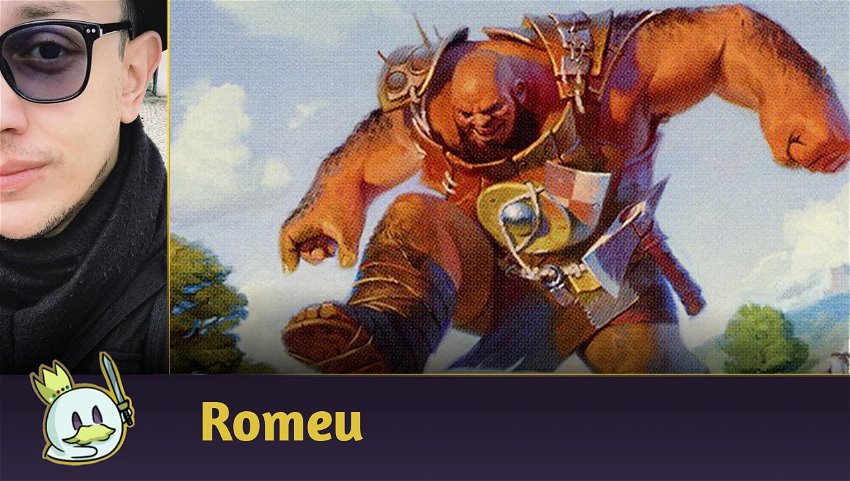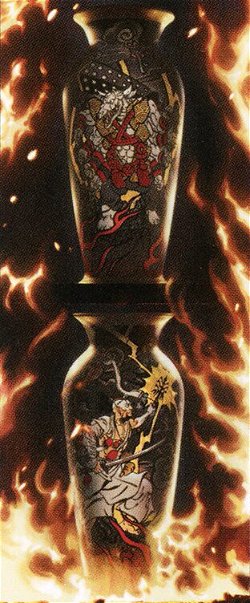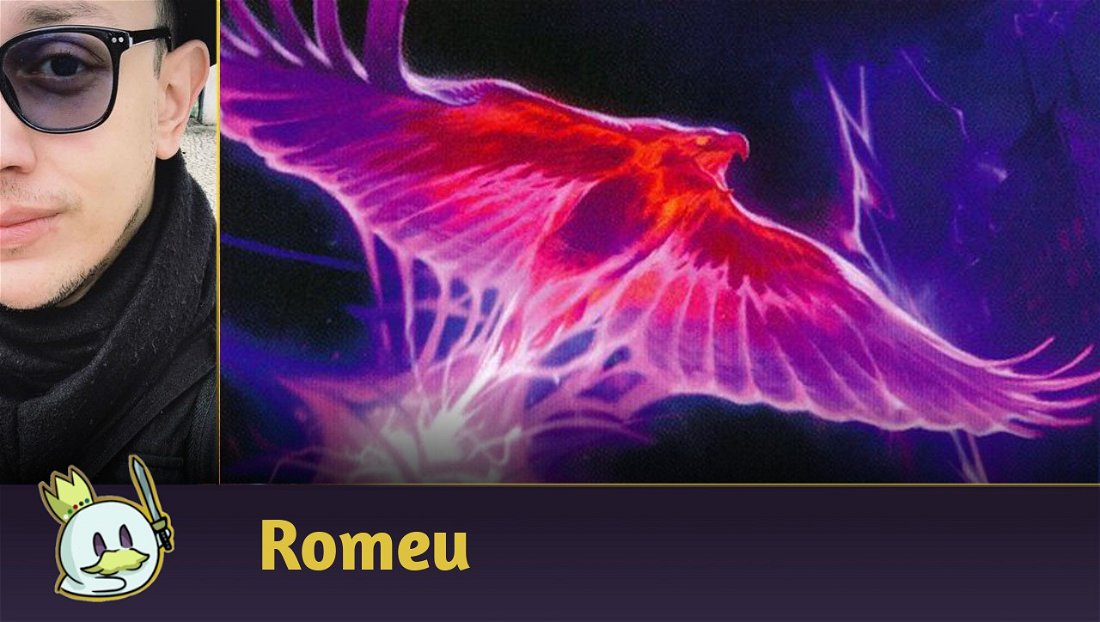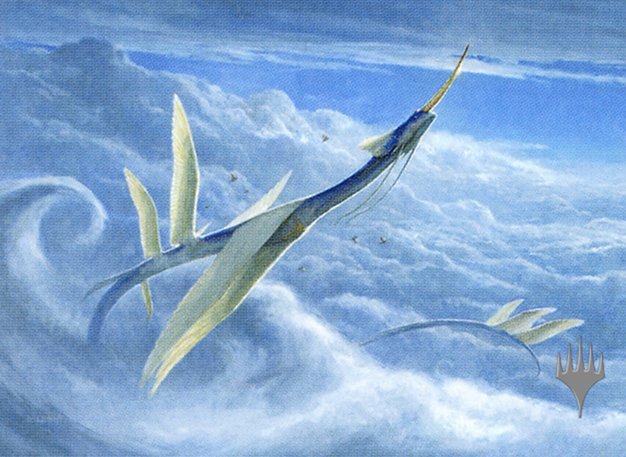The Pioneer Challenger Decks 2022 had their decklists revealed last week, featuring four different archetypes: Izzet Phoenix, Orzhov Humans, Gruul Stompy and Dimir Control — each with a distinct strategy and ready to play out of the box, making it perfect for tournaments at local stores.
The main focus of this product is to serve as a gateway for players to enter an eternal format without the need to incessantly search for older cards that aren't always easily available, guaranteeing them the experience of enjoying the format from a sealed product found at any local store.
Unlike what we did last year, where we analyzed the four decks and gave upgrade tips, in this one we will review each one individually, with an in-depth view of what is the proposal that the product seeks to provide and which ones directions we can take based on its content.
Today, we'll look at Gruul Stompy, with its focus on sequencing impactful threats one after the other.
Out of the Box — Gruul Stompy
Unlike Izzet Phoenix, Gruul's list straight out of the box has a very focused strategy on accelerating mana on turn 1 to cast bomb after bomb on turn 2 onward, pressuring opponents and extracting value with one threat after another.
However, it is far from something we can actually call Stompy, getting closer to a Midrange with an aggressive stance: you speed up mana, play your threats and then interact with your opponent turn after turn with removals or permanents that generate 2-for-1 effects, such as Glorybringer. And looking at it that way, even its composition of lands is relatively pretty robust to what the archetype sets out to do.

With nine dual lands, including five that enter untapped on turn 1, Gruul Stompy can, for the most part, grant access to green mana to cast Elvish Mystic or Llanowar Elves as soon as possible, which will preferably speed up its game with Bonecrusher Giant or Lovestruck Beast on turn 2.

An important advantage of the creature core of this archetype is that they all have some added value: Bonecrusher Giant works as removal and burn, Lovestruck Beast guarantees two bodies on the board, Scavenging Ooze — which seems excessive with four copies — is an excellent graveyard hate, and that extends to the curve toppers.

Questing Beast is a great way to punish the opponent's tapout to deal with our creatures, especially if they choose to cast something like Liliana of the Veil, while Glorybringer demands an immediate answer to not become 2-for-1 or greater in the long run, and Chandra, Torch of Defiance is a great way to keep your resources flowing while still managing win the game on its own.

The biggest absence on the list is Embercleave, the famous 'free-win button' which would benefit from the total of 26 creatures (plus four more with Lovestruck Beast) to go over blockers and deal lethal damage at unexpected times.
If the idea was to follow a Stompy route, its inclusion would be superior to trying to create a card advantage engine with Chandra, Torch of Defiance — which is not bad, but I think there is a limitation on the number of mythics in this product, and it would be preferable to have Embercleave than Chandra if we were forced to choose one of them.

Another weak point of the list is the excess of removals: there is no need for three copies of Abrade in the Maindeck, and it would make more sense if the archetype sought to capitalize even more on top of its mana dorks by including more three-drops, like Gruul Spellbreaker, or even some damage spell like Lightning Strike would be preferable in this slot to better interact with the idea of always pressuring on the opponent.

the sideboard is also well-built and seeks to reproduce what Gruul lists in this category normally run in these slots.
Despite the excessive number of Flame-Blessed Bolt, the inclusion of the remaining cards (even the four Cindervines) seems solid enough to give Gruul Stompy a decent chance against most other decks, and the three copies of Rending Volley are the icing on the cake, as it has gone up in value recently.
In summary, despite lacking one of the most important pieces of the archetype - Embercleave - the Gruul Stompy straight out of the box offers an archetype that is consistent and solid enough to not require mandatory upgrades the moment you buy it, being playable in small Metagames as it comes in the sealed product.
Upgrades Guide
There are two routes we can take with the base offered by the sealed product: stick to the Gruul Midrange proposition, where your threats offer 2-for-1 effects and your mana curve is increasing every turn, or the Gruul Aggro , where we capitalized on the idea of playing as many impactful creatures as early as turn 2 thanks to mana dorks, opting for speed over value.
But first, we need to invest in improving manabase. The good news is that lands in this color combination are notoriously more affordable than in Rakdos, Izzet, Dimir or Azorius, so we can maximize our investment in them.
Mana base
IN:

OUT:

With twelve dual lands that enter untapped, you'll usually have the consistency you need to cast your spells at the right timing without getting in the way of costs in the first few turns.
Despite initially entering tapped, I think having a copy of Rockfall Vale might be worth it just to add a little more consistency to the list at crucial moments, while the moments where its presence will disrupt your game plan become rare.
Gruul Midrange
For Gruul Midrange, we need to invest a bit more in maintaining our land drops without them becoming a problem later on. So, we need more utility land.
IN:

OUT:

Lair of the Hydra and Sokenzan, Crucible of Defiance offer more threats and a way to capitalize around the mana sink in longer matchups.
IN:

OUT:

To further increase the usefulness of our lands and give us more comprehensive removal, we've also included two copies of Shatterskull Smashing to deal with mana dorks and other small creatures or Planeswalkers in mid- and late-game.
IN:

OUT:

Finally, the last recommended change to the maindeck is to add the famous "free-win button", Embercleave, which is particularly lethal if equipped to Bonecrusher Giant or Lovestruck Beast.
And with the support of our land drops, in addition to Chandra, Torch of Defiance, we'll hardly have a problem casting it for four or five mana in tougher times.
IN:

OUT:

However, to increase the consistency at which we play Embercleave for three or even two mana, the inclusion of Kari Zev, Skyship Raider seems necessary as she offers two bodies on the board every time she attacks, in addition to blocking some of the early drops from other Aggro decks well.
Scavenging Ooze is an excellent card on many occasions in Pioneer these days, and you can keep it with four copies in the Maindeck if you prefer, but here, we're moving two to the Sideboard to make room.
Sideboard
Again, it's important to point out that Sideboard is very dependent on the Metagame you're set in, making it necessary to assess how much each option is worth based on which decks you're up against.
Here, we seek to diversify the Sideboard foundation into a more comprehensive Metagame.
IN:

OUT:

Flame-Blessed Bolt is excellent if you face numerous small Aggros or recurring threats with low toughness, such as against Mono Black Aggro, Humans or Izzet Phoenix. But Gruul's creatures often have the upper hand with larger bodies. Therefore, the need to punish the Go-Wide is not so great that you need four specific one-mana removals.
Scavenging Ooze has been moved to the Sideboard for recursively dealing with anything you need to exile from someone else's graveyard, while growing and granting extra breath with each activation.
Strangle is a more comprehensive one mana removal, being more important than Flame-Blessed Bolt in many games. You can opt for another removal in this slot, such as Lava Coil or even Domri's Ambush.
IN:

OUT:

Cindervines is a good anti-control or anti-spellslinger tech that doubles as an artifact or enchant hate, and its inclusion in the out-of-the-box product is decent. However, the list lacks something to play against other attrition-oriented Midranges, and Hazoret the Fervent is a good choice for punishing the opponent for not easily dealing with indestructible threats.
IN:

OUT:

Abrade, while not worth it on maindeck, is a flexible answer on the Sideboard and one of the few available that directly handles with Greasefang, Okiba Boss plus artifacts tutored by Karn, the Great Creator. So, adding it seems like a good option.
Like Cindervines, three Shifting Ceratops on the Sideboard seems a bit too much, as it's a four-drop that you normally only cast from turn 5 onwards.
Other Upgrades
With these changes, your list will look like this:
From this base, you can look for some pieces to improve the composition of your strategy in the way that you consider most pertinent. In particular, I recommend a Fable of the Mirror-Breaker playset, plus a Den of the Bugbear or two and other staples like Unlicensed Hearse and Klothys, God of Destiny on the Sideboard.

Gruul Aggro
But if you like to pressure your opponents and finish games quickly and without much interaction, a more aggressive and exclusively beatdown-oriented variant will be more attractive for your taste.
The main stance change in this case is the absence of much direct interaction: you have a plan, and you're going to stick to it, take your opponent's life total from 20 to 0 in the fewest turns possible, putting a creature after another on the battlefield and leaving the math to the opponent.
IN:

OUT:

With a focus on speeding up our game plan, we can't afford to tap five mana to put a 4/4 with Haste and Flying on the battlefield, as we need to capitalize on cheap permanents. So Glorybringer leaves the list, being replaced by Reckless Stormseeker, which turns every creature that comes into play after into a threat.
IN:

OUT:

Embercleave is even more important in this version because the entire deck is basically geared towards the expectation of casting it fast, but without the equipment being the only viable means of winning the game.
IN:

OUT:

Werewolf Pack Leader excels when it comes to impactful creatures, and its ability to give us an extra draw every turn helps keep our resources running.
Chandra, Torch of Defiance was moved to the Sideboard to be on the list in attrition games where we couldn't win in the race, and I have some doubts about removing Questing Beast from the deck, but we're talking about a 4/4 that generates no value when it comes into play for four mana.
IN:

OUT:

The last four slots are flexible, and you can even keep Mizzium Mortars if you prefer, or add any other cards you think are important.
Here, I opted for Legion Loyalist, as the archetype has no problem triggering Battalion, where all your creatures are likely to positively trade in combat, as well as being another 1/1 creature to ensure that Lovestruck Beast attack regularly.
IN:

OUT:

As in the Midrange variant, here we need to mitigate the amount of bad topdecks with utility lands, since reducing their number too much isn't recommended. So, in addition to Lair of the Hydra and Sokenzan, Crucible of Defiance, we have Kazandu Mammoth in the form of an extra threat that gives us more ways to generate green mana to cast Werewolf Pack Leader on turn 2.
Sideboard
IN:

OUT:

Cindervines is an interesting option against more archetypes than Outland Liberator, but our main focus on this list is to have one creature in play every turn, so we can't afford to play an enchantment that does nothing on its own.
IN:

OUT:

Again, Strangle is a more comprehensive interaction, so it's replacing Flame-Blessed Bolt as our main removal in games where they're needed.
IN:

OUT:

Finally, we need ways to play well in attrition games, and in addition to the card advantage provided by Chandra, Torch of Defiance, we have Squee, Dubious Monarch as a recurring creature that improves your board position each turn if not properly responded to.
Shifting Ceratops is too heavy for this strategy, and Abrade seems unnecessary when we already have a playset of Outland Liberator and Strangle for both occasions where we would use it.
Other Upgrades
With these changes, your list will look like this.
And other upgrades can include Collected Company to catch the opponent off guard in the end step, as well as Den of the Bugbear as a more impactful manland than Lair of the Hydra.

In addition to these, the combo of Combat Celebrant and Fable of the Mirror-Breaker is also an attractive option and a way to win the game instantly with cards that are naturally good into the archetype.

Conclusion
The Gruul Stompy was very well-built right out of the box, and it opens up enough possibilities for the player to choose between a more paced plan based on value and 2-for-1 trades, or the idea of going to the race and winning the match in a few attacks before the opponent stabilizes.
If you want more ideas on how to improve your deck, or how Pioneer as a format behaves, remember that we have our Metagame page, frequently updated with the latest Challenges and Leagues, as well as the results of events taking place on the Cards Realm tournament platform!
Thanks for reading!














— Comments 0
, Reactions 1
Be the first to comment